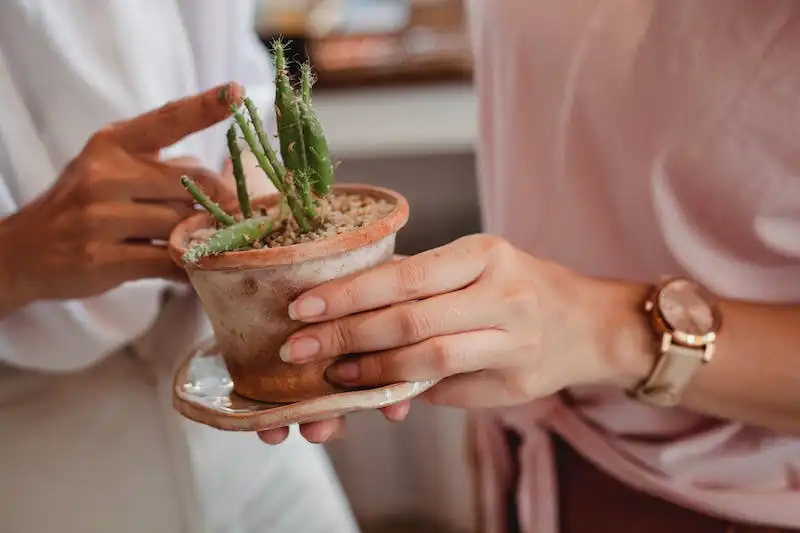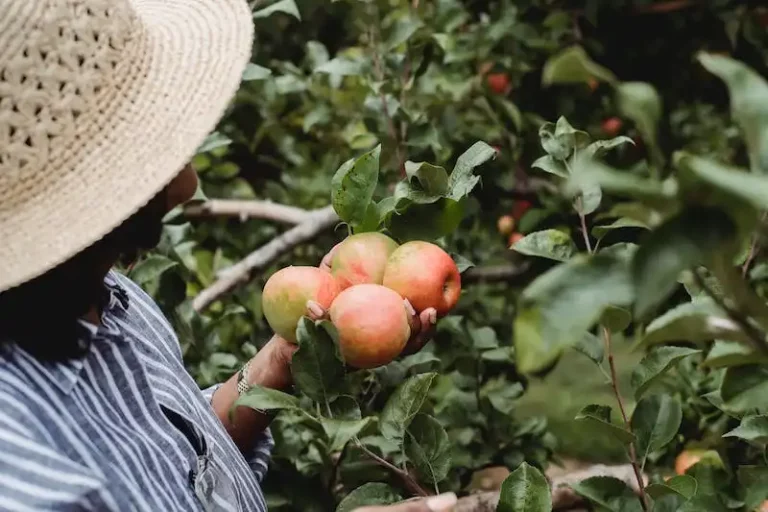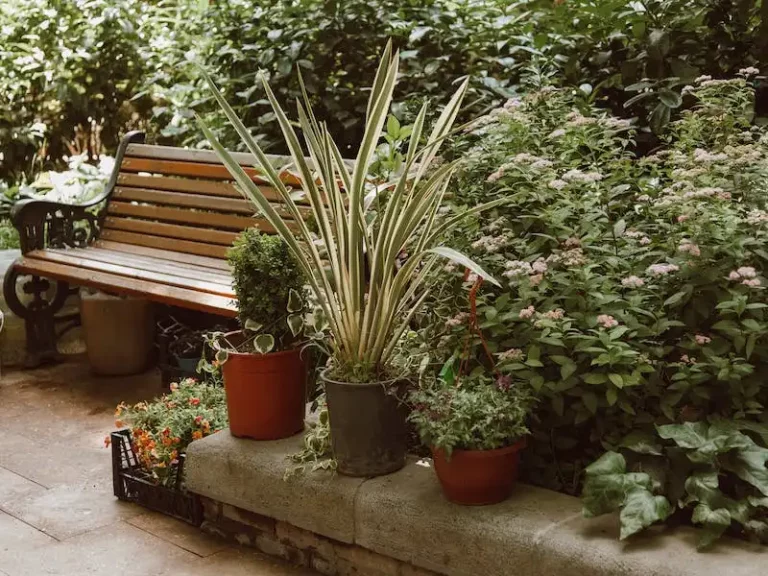Are you interested in growing plants but unsure of where to start? Look no further than The Plant Guide, your go-to resource for all things plant-related. Whether you have a green thumb or are a beginner, this article will provide you with valuable information to help you keep your plants healthy and thriving all year round.
One of the key aspects of successful plant care is understanding the specific needs of different plant varieties. For example, some plants, like sedums, are adaptable and can tolerate a wide range of conditions, including drought and low humidity. This makes them a wonderful choice for both indoor and outdoor gardens. Additionally, sedums are low-maintenance, making them perfect for those who may neglect their plants from time to time.
When it comes to growing sedums, light is an important factor to consider. These plants thrive in full sunlight, so be sure to place them in a spot where they can soak up plenty of sunlight throughout the day. As for soil, sedums prefer well-draining soil with plenty of organic matter. If planting in containers, choose a soilless mix specifically formulated for container gardening.
In terms of care, sedums require minimal watering. They are highly drought-tolerant and can survive for extended periods without water. Over-watering can actually cause more harm than good, as it can lead to root rot and other issues. However, during the flowering season, sedums may benefit from a little extra water to support their blooming process.
If you want to propagate sedums, there are several methods you can try, including seed propagation and division. Seed propagation involves collecting mature seeds from the plant and sowing them in a seed tray or directly in the garden. It typically takes a few weeks for the seeds to germinate. Division involves separating a clump of sedums into smaller sections and replanting them in different areas of the garden.
Sedums are a common family of perennial plants that offer a wide variety of options for gardeners. From their beautiful flowering displays in the autumn to their interesting foliage all year round, sedums can add visual interest and charm to any garden. Whether you’re a gardening enthusiast or just starting out, The Plant Guide has all the information you need to learn about sedums and other common perennials.
“Sedums are a versatile and low-maintenance option for any garden. Their adaptability and beautiful blooms make them a favorite among many gardeners.” – Maria Almeida
So whether you’re looking to spruce up your outdoor space or bring a touch of greenery indoors, consider adding a sedum or two to your plant collection. With their easy maintenance and ability to thrive in various conditions, sedums are a great choice for both experienced and novice gardeners. Visit The Plant Guide to learn more about sedums and discover new ideas for your garden.
Autumn Joy Sedum Variety – Learn How To Grow Autumn Joy Plants
The Autumn Joy sedum variety is a tiny plant that belongs to the family of succulent perennials. With its moderate growth rate, this plant can reach a height of about one foot in full sun, making it a perfect addition to any garden.
One of the key reasons why the Autumn Joy sedum variety is so popular is because it is adaptable to a wide range of temperatures and soil conditions. It thrives in well-drained soil and can withstand both hot and cold temperatures. This variety is hardy in USDA plant hardiness zones 3 to 9, making it suitable for many regions.
If you’re planning to grow Autumn Joy sedum from seed, you should start planting them several weeks before the last frost date. This will give the seeds enough time to establish their root system. Make sure to provide plenty of light and water the seeds regularly to keep the soil moist.
Once the Autumn Joy sedum plants have started to grow, they require minimal care. Watering should be done sparingly, including during the winter months when the plant is dormant. Providing good drainage is essential to prevent waterlogged soil, which can cause root rot and other diseases.
The Autumn Joy sedum variety is also loved by pollinators for its attractive blossoms. The plant produces clusters of flowers that start off as pale green and gradually turn to a deep pink over time. These flowers are not only beautiful to look at but also serve as a food source for bees, butterflies, and other pollinators.
To enhance the flowering of Autumn Joy sedum, you can apply a slow-release fertilizer in the spring. This will provide the plant with the necessary nutrients to produce more vibrant blooms. However, be careful not to overfertilize, as this can lead to excessive foliage growth and fewer flowers.
In conclusion, growing Autumn Joy sedum is easy and rewarding. Whether you’re a seasoned gardener or a beginner, this plant is a great addition to any garden. It can adapt to various soil and temperature conditions, requires minimal care, and attracts pollinators with its beautiful flowers. So why not give it a try and learn how to grow Autumn Joy plants?
Plant type: |
Succulent perennial |
Growth rate: |
Moderate |
Height: |
About 1 foot |
Sunlight: |
Full sun |
Hardiness zones: |
3 to 9 |
Soil: |
Well-drained |
Watering: |
Sparingly |
Fertilizer: |
Slow-release in spring |
Pollinators: |
Attracts bees, butterflies, and other pollinators |
About Autumn Joy Sedum Plants
The Autumn Joy Sedum plant is a member of the Sedum family and is known for its beautiful foliage and blossoms. The tiny flowers grow in clusters and bloom in the late summer and autumn days, attracting bees, butterflies, and other pollinators. This plant comes in a variety of types, all of which are low-maintenance and tolerant of many different conditions.
Autumn Joy Sedum plants are easy to grow and propagate. They thrive in well-draining soil and prefer plenty of sunlight. They are highly tolerant of drought and can even tolerate common diseases and pests. Because of their succulent nature, sedums have a reputation for being able to survive harsh winters.
If you want to start growing Autumn Joy Sedums, there are plenty of ideas and tips to enhance the plants’ growth. They can be planted in containers or directly in the ground, as long as the soil is well-drained. Sedum plants are excellent for overwintering, making them a great addition to any garden or landscape.
Autumn Joy Sedums are perennials, meaning they come back year after year. This hardy plant is a wonderful addition to any garden, as they provide beautiful blooms during the autumn months when many other plants are spent. Along with their aesthetic appeal, sedums are also beneficial for the ecosystem, providing habitats for beneficial insects.
In summary, Autumn Joy Sedum plants are easy to care for, low-maintenance, and tolerant of various conditions. They thrive in well-drained soil and enjoy plenty of sunlight. These plants are excellent for overwintering and provide beautiful blooms in the autumn. Sedums are a wonderful addition to any garden or landscape, enhancing the overall aesthetic appeal and providing a habitat for beneficial insects.
How to Grow Autumn Joy
Autumn Joy is a common and excellent choice for gardens, as it is a low-maintenance perennial that blooms beautifully during the autumn season. Belonging to the sedum family, this plant has succulent and fleshy leaves that spruce up the garden with their attractive appearance.
To start growing Autumn Joy, you can either plant the stonecrop sedums as seed or lift a plant from a friend’s garden. The best time to start planting is when the temperature is moderate and the soil is well-drained. This is usually during the spring, but you can also plant it in early summer.
Autumn Joy requires lots of sunlight to enhance its growth. Six or more hours of direct light per day is ideal. They can tolerate some degree of shade but prefer full sun. Sedums are commonly found in USDA hardiness zones 3 to 9.
Autumn Joy is an excellent choice for pollinators as it attracts butterflies, bees, and other types of insects. The blossoms are a joy to see and create a beautiful display of color in the garden. The sedum blooms start as tiny pink buds and gradually turn into a beautiful rusty red color.
This plant is easy to grow in well-drained soil, but it can also tolerate soilless conditions. It does not require much fertilizer, making it an easy plant to care for. However, you can use a balanced fertilizer once a year to give it a boost.
Autumn Joy is also known for its ability to withstand the cold. This plant can tolerate temperatures well below freezing and can even overwinter without any issues. However, if you live in an area with extremely cold winters, it is advisable to cover the plant with a layer of mulch to provide extra protection.
When it comes to pests and diseases, Autumn Joy is relatively resistant. However, it is important to keep an eye out for common garden pests like aphids and slugs. Regular pruning can help to maintain the shape of the plant and prevent any potential diseases.
In summary, Autumn Joy is a delightful plant that brings joy to autumn gardens. Its easy maintenance and beautiful blooms make it a popular choice among gardeners. Whether you grow it from seed or lift a plant from a friend, this sedum will surely add a touch of beauty to your garden.
Learn more about Autumn Joy and other sedum types from our comprehensive plant guide.




